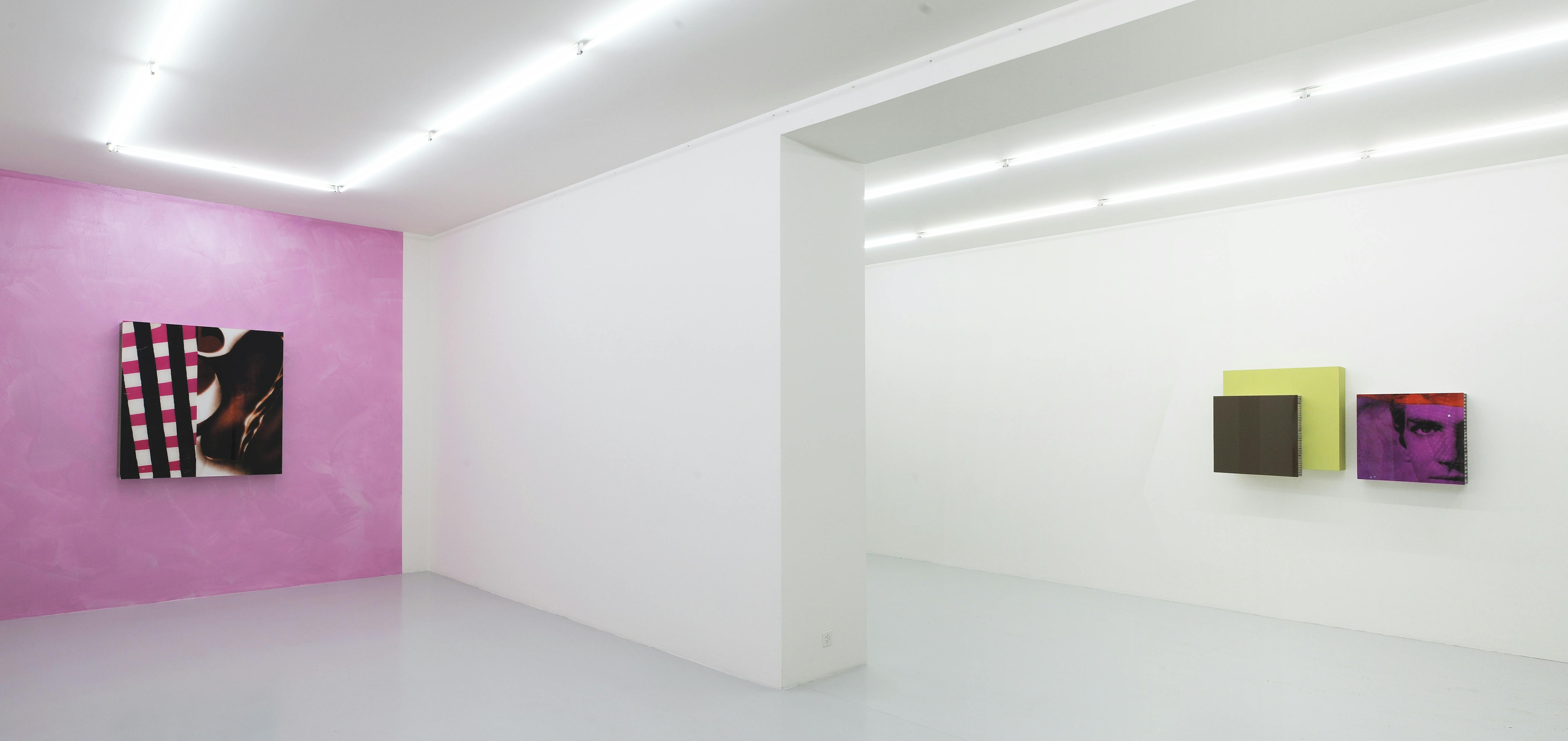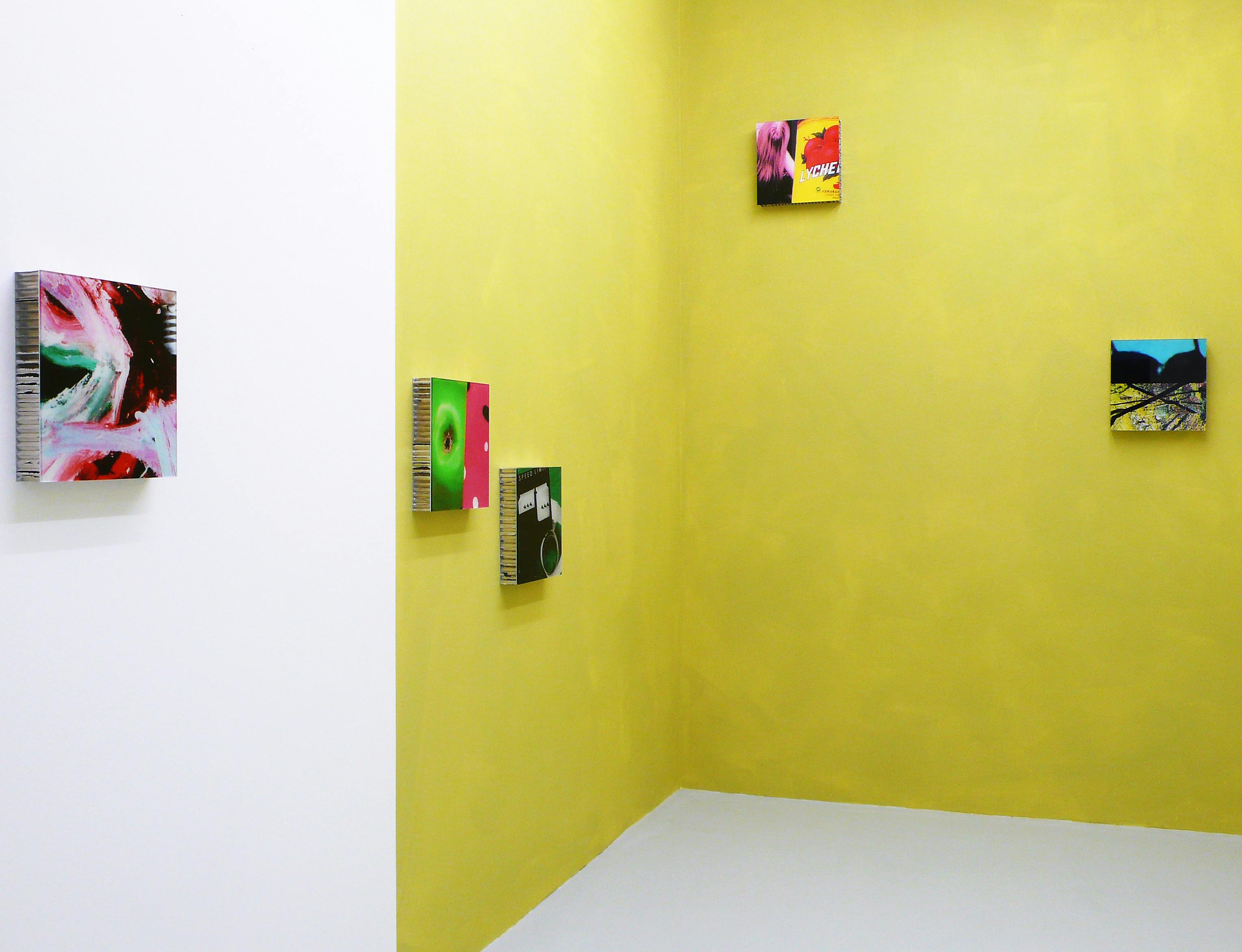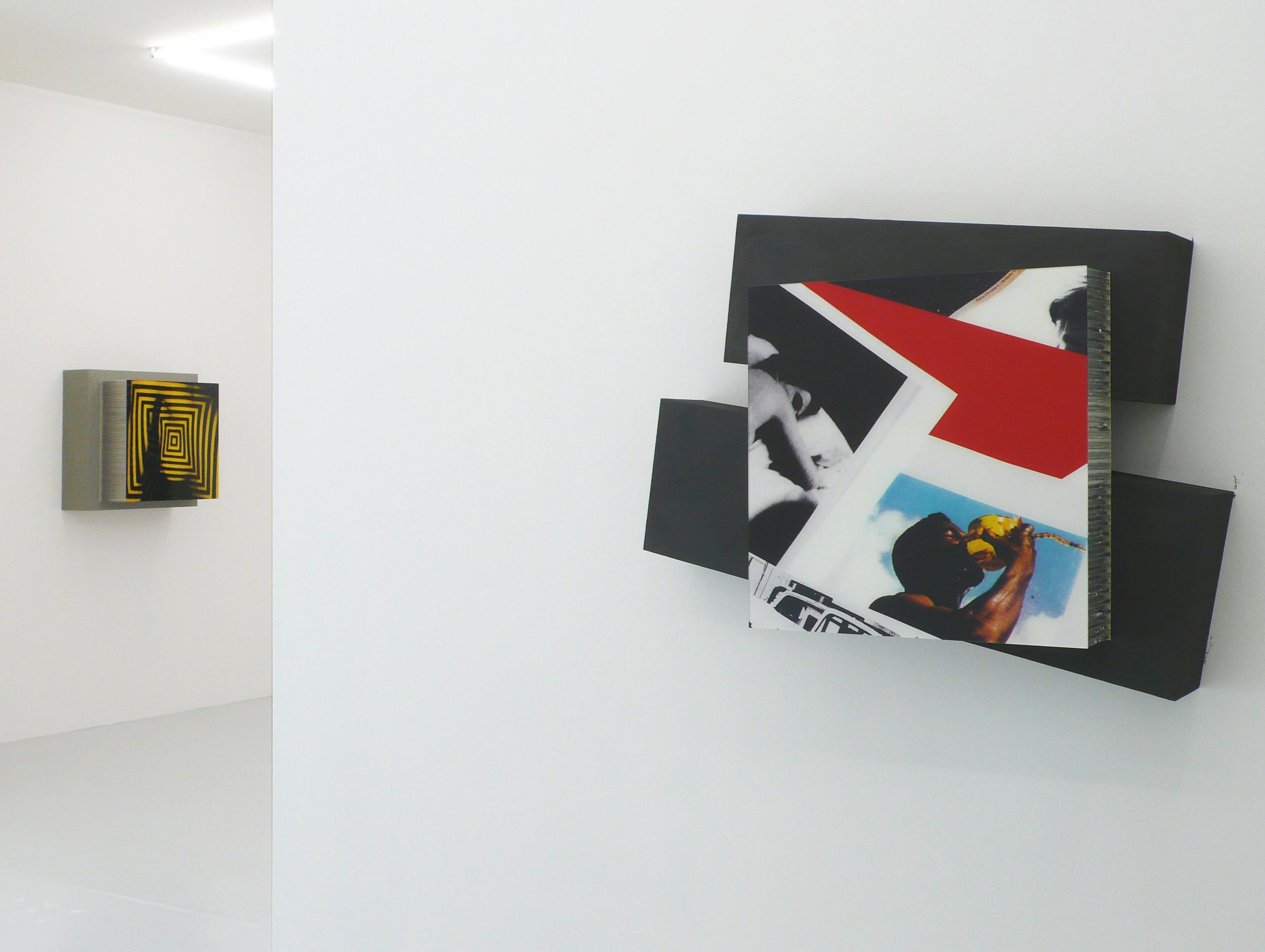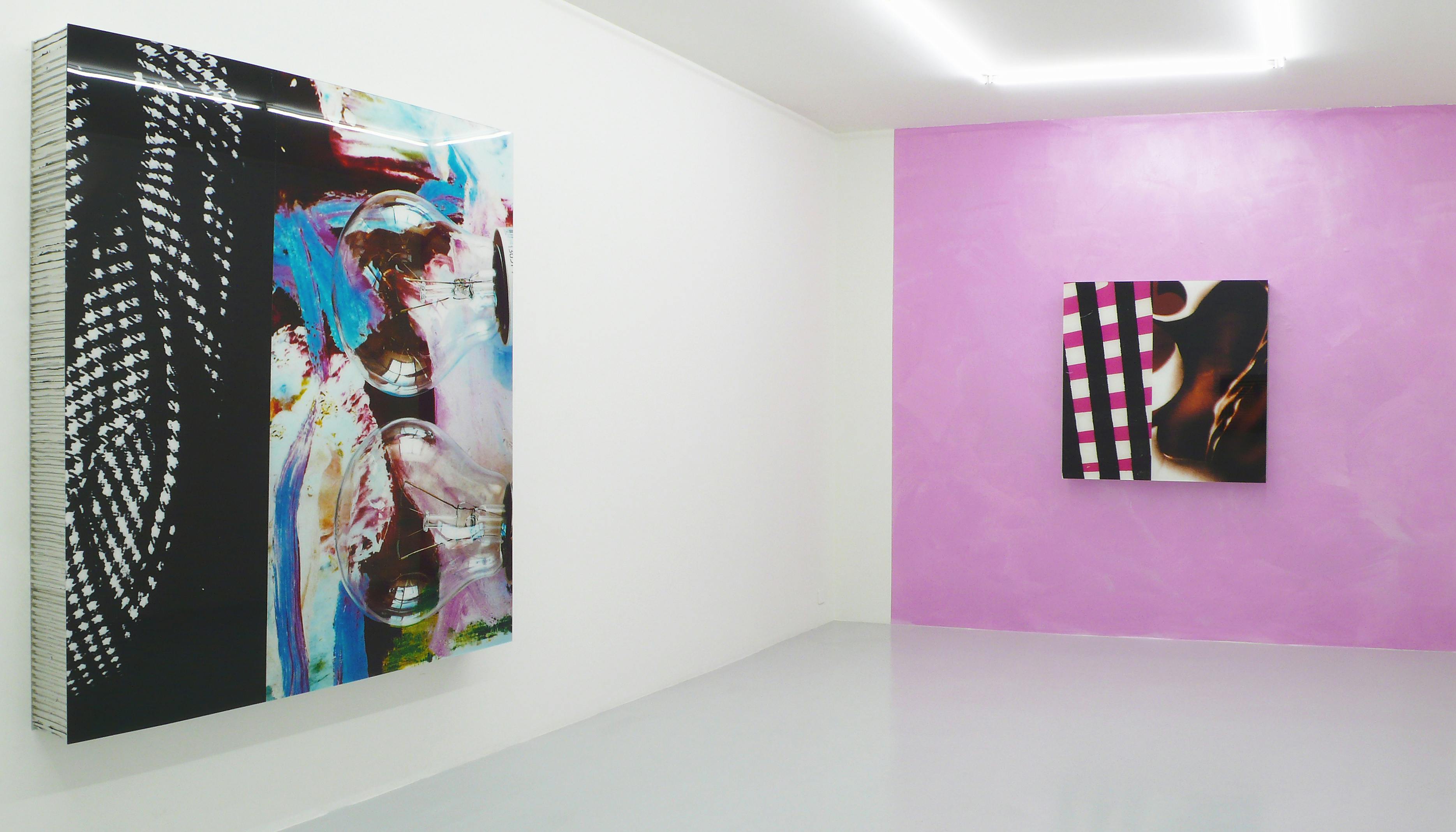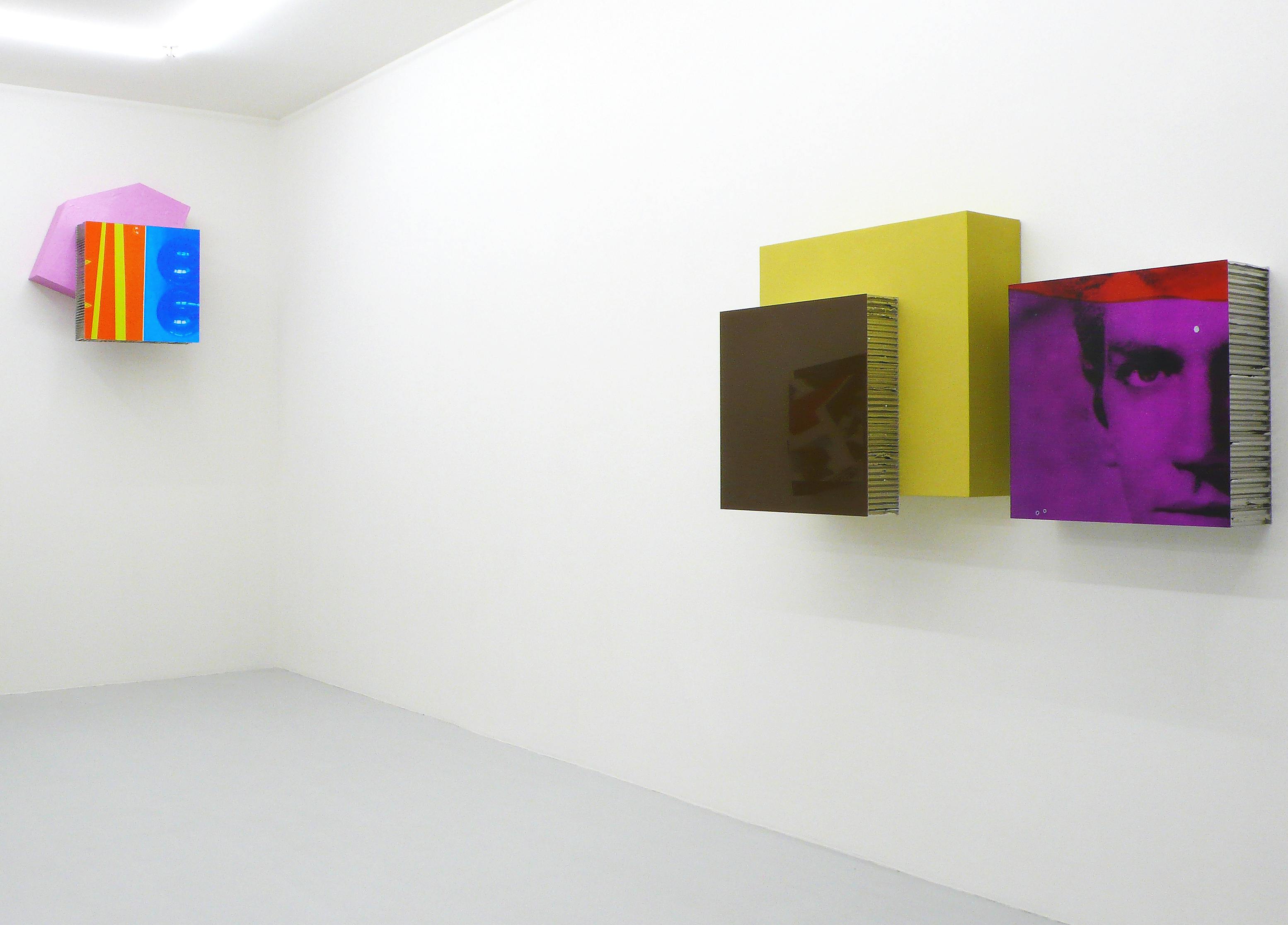Harald F. Müller (born 1950 in Karlsruhe/D, lives and works in Öhningen near Stein am Rhein/D) is known for his large-format reproductions, collages and word sculptures. He has collaborated on architectural projects, particularly with Gigon/Guyer Architects in Zurich. His projects with them include the colour scheme for the Broelberg I und II residential estates in Kilchberg/CH, the signal box in Zurich’s marshalling yard, the training centre in Appisberg/CH and the Goldschlägi housing complex in Schlieren/CH among others. 2004 Harald F. Müller has designed the colour scheme of the hotel at Kartause Ittingen/CH. Currently he is working on the Löwenbräu-Areal, the Prime Tower in Zurich and on architectural projects on the Campus of Stuttgart University/D (planning of a new Aerospace Centre).
Müller’s art might be compared to the way a DJ works; his mix of materials includes photography, painting and sculpture. Extensive research in archives and libraries leads to the choice of a few significant pictures that he uses unchanged. However, by decontextualizing them, he undermines the self-evidence of their subject matter; they become ambiguous. The artist enlarges the pictures he has selected to as much as four metres, printing them on conventional Cibachrome paper mounted on thin panels of aluminium. The pictures are not hung flush with the wall but on sculptural mounts so that they appear to be floating. When viewed in close-up, the halftone dots of the enlargement turn the photograph into an artwork that allows for different levels of perception, from the objective to the abstract. The same effect is achieved when Müller crops pictures of architecture so that the three-dimensional image is transformed into a two-dimensional plane (of colour).
While his "reproductions" explore variations on visual production, the works in the Cuts series, begun in 2006, present a collaged mix of reproductions, painting, photography and found pictures. The pictures are assembled in overlapping layers of disparate elements. Partially abstract in appearance, the Cuts are characteristic of Müller’s work inasmuch as they convey a message that is neither unequivocal nor anecdotal. The small ones, installed in the back of the gallery, look as if they were flying in front of the walls like satellites in the universe (these premiered last year at the gallery Distrito 4 in Madrid). Since both the “reproductions” and the Cuts are treated as sculptures and not considered photographic works, they are related – at least strategically – to the word sculptures. Three-dimensional letters, most of them of solid linden wood, are hung from steel mounts and suspended in front of coloured walls. Taken out of context and therefore incomprehensible, the letters oscillate between lettering and sculpture, abstraction and figuration. Through transformation into a different medium, the images are subject to a different interpretation when presented in the context of art. A case in point is the lettered object SINGEN [a play on the German word for ‘to sing’ and the town of Singen], created for Jean Christophe Amman’s exhibition HIER, DA UND DORT, Art in Singen, 2001.
The artistic strategy of transposing subject matters and techniques within his own groups of work and the creation of ever new relations and levels of content is Müller’s response to the incessant, unstoppable flow of information. Information that is constantly being piled up, linked, used and reconfigured inevitably leads to new developments and astonishing connections. With respect to Harald F. Müller’s art, that means linking imagery with colour and ultimately with architecture. The new Cuts, on view here for the first time, have taken their own walls along, so to speak, since they are hung on irregularly shaped and painted geometrical bodies. The Cuts now react to space as painted sculptures that are interlocked with their own walls. They are hybrid works that both define and defy space in their incomparable exploration of the potential of image and space.
[Text: Dominique von Burg]






